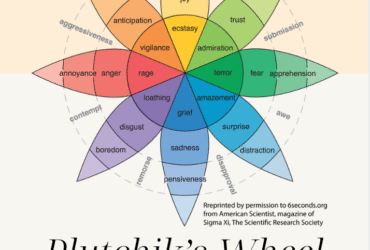Online education operates through internet-based platforms where students access study materials, take courses, and submit assignments. Educators provide lessons, support, and feedback via web tools and applications.
Embracing the flexibility of modern technology, online education has revolutionized the traditional learning environment. Students around the globe can now engage in coursework from the comfort of their own homes or while on the move, interacting with peers and tutors in virtual classrooms.
This approach to education offers a range of programs, from K-12 to higher education and professional certifications, all accessible through computers or mobile devices. Coursework in online education typically involves a combination of video lectures, interactive assignments, and discussion forums. These digital platforms facilitate a self-paced learning journey that caters to different lifestyles and learning needs, making education more inclusive and accessible. With its ease of access and adaptable nature, online learning warrants a seamless integration into daily routines, leading to a surge in popularity among students seeking convenience and quality education.

Credit: www.simplilearn.com
The Rise Of Online Education
The rise of online education is changing how we learn. From its early origins, it has now become a primary way for gaining knowledge. Let’s dive into its historic growth and present trends.
Historical Evolution Of Digital Learning
Online education started with basic email correspondence courses. Gradually, it included more interactive mediums like discussion boards and video lessons.
- In the 1980s, institutions began providing online courses.
- In the 1990s, Internet use expanded, so did online education.
- The early 2000s saw the rise of popular online learning platforms.
Today, online education includes rich multimedia content, virtual classrooms, interactive quizzes, and artificial intelligence-driven personal tutors.
Current Trends In E-learning
Online education is not standing still. It continues to evolve with new trends emerging constantly.
- Mobile learning: Online courses are being optimised for mobile devices.
- Microlearning: Small, easily digestible lessons are becoming popular.
- Gamification: Integrating elements of gaming to boost engagement and learning.
- Personalized Learning: AI is being used to tailor education to each student.
These trends hint towards a future where online education is more engaging, accessible and tailored to individual needs compared to traditional learning methods.
Essential Components Of Online Learning
Students who enjoy self-paced courses might ask, “How does online education work?” The secret lies in three essential components: Learning Management Systems (LMS), Digital Course Materials, and Communication Tools for Interaction.
Learning Management Systems (LMS)
Learning Management Systems serve as the classroom’s digital counterpart. They function as an online hub, hosting all school activities and resources.
- User-friendly design: An LMS eases learning by providing quick and effortless access to course materials.
- Performance tracking: These systems allow teachers to track student performance, identifying areas of improvement.
- Interactive learning: Through an LMS, students engage in interactive lessons, boosting their understanding of difficult concepts.
Digital Course Materials
For effective online education, students need access to Digital Course Materials. These materials facilitate learning by breaking complex ideas into digestible chunks.
- E-books and PDFs: An essential foundation for online education, e-books and PDFs provide the bulk of instructional materials.
- Slide presentations: Supplements to textual materials, slide presentations provide visual explanations of various concepts.
Communication Tools For Interaction
Communication Tools for Interaction serve to inspire dialog and collaboration amongst online learners.
- Video conferencing: This technology enables real-time learning discussions, amplifying the social aspect of online education.
- Discussion boards: Discussion boards foster active learning, motivating students to think critically and share their ideas.
Designing An Online Course
Creating an online course requires careful planning and a deep understanding of how digital learning works. Educators aim to develop a curriculum that is engaging, interactive, and maximizes the potential of technology. This section dives into the essential components of crafting an educational experience fit for today’s learners.
Curriculum Development For The Digital Age
Dynamic, flexible curriculums thrive in online education. They adapt to the constant changes in technology. Let’s look at the steps to create an effective online curriculum:
- Identify Goals: Establish clear objectives for what students should learn.
- Select Content: Gather material that reflects the latest industry trends and insights.
- Create a Structure: Design modules that build on each other for smooth learning progression.
- Engage with Experts: Collaborate with field specialists to ensure content relevance and accuracy.
Incorporating Multimedia And Interactive Elements
Online courses come to life with multimedia and interactivity. These elements hook the learner’s attention and boost retention. They include:
- Video Lectures: Recorded sessions guide through complex topics.
- Podcasts: Audio content for learning on the go.
- Quizzes: Quick tests reinforce knowledge after lessons.
- Discussion Boards: Forums promote peer interaction and idea exchange.
- Simulations: Virtual scenarios for hands-on practice.
Assessment And Feedback Mechanisms
To measure students’ understanding, online assessment tools are essential. These include:
| Assessment Type | Function |
|---|---|
| Automated Quizzes | Instant grading and feedback. |
| Assignments | Submissions are reviewed for in-depth evaluation. |
| Peer Reviews | Learners critique each other’s work. |
| Surveys | Gather feedback to improve course content. |
Regular and constructive feedback helps students understand their progress. Educators use analytical tools to track and address learning challenges promptly.
Student Engagement In Virtual Classrooms
Online education has transformed how we learn. It hinges on effective student engagement in virtual classrooms. A blend of technology, interaction, and collaboration forms the crux of virtual learning success. Let’s dive into strategies for enhancing student involvement online.
Building Community Online
Feeling part of a community boosts student involvement. Here’s how educators can foster this sense of community:
- Welcome videos: Instructors can create personalized welcome messages.
- Discussion forums: A place for students to connect and share ideas.
- Virtual events: Online gatherings replicate traditional classroom experiences.
- Peer introductions: Encourage students to introduce themselves in a friendly, online setting.
Keeping Students Motivated
Online educators face the challenge of maintaining student motivation. Follow these tips to keep interest high:
- Interactive assignments: Activities bear more relevance to real-world scenarios.
- Timely feedback: Quick responses from instructors validate student efforts.
- Goal setting: Short-term objectives keep students focused and driven.
- Recognition: Acknowledging achievements fuels further engagement.
Collaborative Learning Techniques
Collaboration enriches learning experiences. Implement these online collaborative methods:
| Technique | Description | Benefit |
|---|---|---|
| Breakout Rooms | Small group discussions within a larger class | Personalized attention and peer interaction |
| Group Projects | Assignments completed by small teams | Develops teamwork and communication skills |
| Online Workshops | Interactive sessions with a specific focus | Hands-on learning and practical application |
| Peer Review | Students critique each other’s work | Encourages critical thinking and feedback appreciation |
Challenges And Solutions In Online Education
Distance learning brings on unique trials. Yet, they also come attached with workable solutions. Dive into the depths of major challenges. Learn about online education solutions worth considering.
Overcoming Technical Barriers
The world of digital learning brings hurdles. Many face technical issues. Yet, easy fixes exist for such snags.
- Weak Internet Connection: An unstable web link halts learning. Solution? Use offline resources. Sync when the connection is good.
- Software Glitches: Software bugs impede progress. Lean on online tutorials. Try YouTube for help.
- Digital Literacy: Not everyone is tech-savvy. Opt for user-friendly learning platforms. Or, take basic computer courses.
Addressing Academic Integrity Concerns
Maintaining academic honesty is a common concern in online teaching. There are efficient ways to tackle this issue.
- Honor Codes: Craft clear academic integrity rules. Make all students aware of them.
- Plagiarism Detection Tools: Use online software. They will check for duplicates.
- Proctored Exams: Online proctoring services ensure fair exams.
Personalizing Learning Experiences
Online education can feel isolating. Yet, personalization shifts that insight, making learning engaging and interactive.
| Challenge | Solution |
|---|---|
| No Personal Contact | Take advantage of video calls. They bring ‘face-to-face’ contact. |
| Lack of Peer Connection | Use study groups. Organize them in online chats or forums. |
| No Real-Time Feedback | Timely feedback is key. Use a fast comment system. |
Every roadblock in online education has a solution. Technical issues to academic honesty, all can be overcome. Dig into these solutions today.

Credit: fastercapital.com
The Future Of Online Learning
Online education is reshaping the future of learning with user-friendly platforms offering a flexible learning environment. This innovative approach works by delivering educational content digitally, thus enabling learners globally to acquire new knowledge at their own pace. With exciting advancements in technology, virtual learning is set to transform traditional education paradigms.
The Future of Online Learning
A digital revolution is changing education. The future holds a promising landscape for online learning. Emerging technologies, expanding global access, and post-pandemic predictions shape the incoming wave.
Emerging Technologies and Their Impact
Smart technology shapes the online learning landscape. Artificial Intelligence (AI) offers personalized learning experiences. Virtual Reality (VR) creates immersive environments. Blockchain keeps academic records safe and sound.
- AI customizes the learning path for each learner.
- VR offers realistic, interactive education on the go.
- Blockchain provides a secure network to store learners’ achievements.
Expansion of Global Access
A global education is now within reach. Internet access bridges the education gap across different countries. Online learning takes learning to every corner of the globe.
| Pros |
|---|
| Offers learning opportunities to all, regardless of location. |
| Bridges the gap between different education systems. |
| Promotes the sharing of global knowledge and ideas. |
Predictions for Post-Pandemic Education
A new normal awaits post-pandemic. Hybrid learning becomes the new standard. Online education continues, redefining traditional learning.
- The blend of online and offline learning
- Stress on acquiring digital skills
- Continual learning, regardless of location or time
Frequently Asked Questions For How Does Online Education Work
How Does Online Schooling Work?
Online schooling operates through digital platforms. Students learn from home, accessing lessons, assignments, and tests online. Interactions with teachers and peers occur through videoconferencing or chat tools.
How Does Getting A Degree Online Work?
Enrolling in an online degree program involves selecting a course, submitting an application, and accessing materials through a virtual platform. Students complete assignments, participate in discussions, and take exams online, often with flexible scheduling to accommodate diverse lifestyles.
How Long Is A Day Of Online School?
A day of online school typically lasts 3 to 7 hours, varying based on the institution and grade level. Individual schedules and course requirements also influence the total time spent in virtual classes daily.
What To Expect In An Online Class?
In an online class, expect virtual instruction, interactive discussion forums, and electronic assignments. Deadlines, attendance requirements, and grading criteria still apply. Self-motivation is crucial. Personal time management and regular communication with instructors enhance success. Tech-savviness is beneficial, but most platforms guide beginners effectively.
Conclusion
Harnessing the potential of online education can invigorate your learning experience and broaden your skillset effectively. There’s no denying its flexibility and accessibility redefine traditional learning boundaries. Remember, success hinges largely on your level of involvement and time management. So, thrive in the digital academic sphere by responding promptly, participating frequently, and planning wisely.
The future of education is online and it’s right at your fingertips.













































Leave a Reply